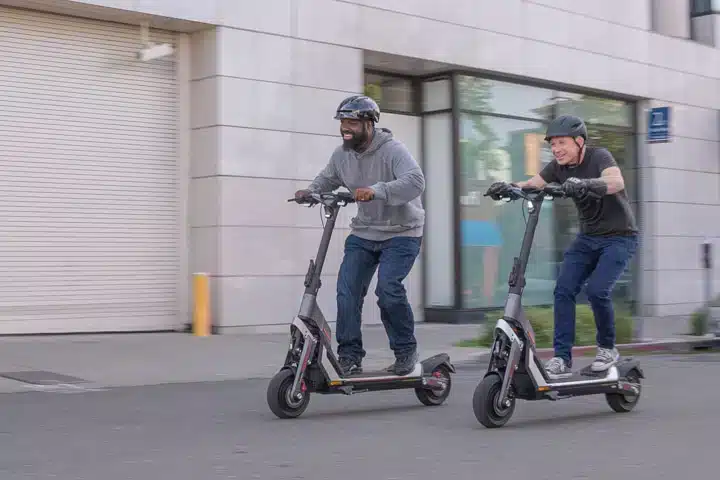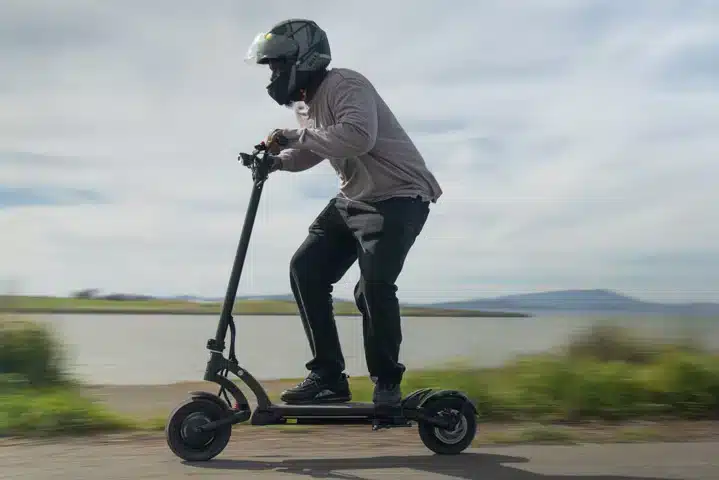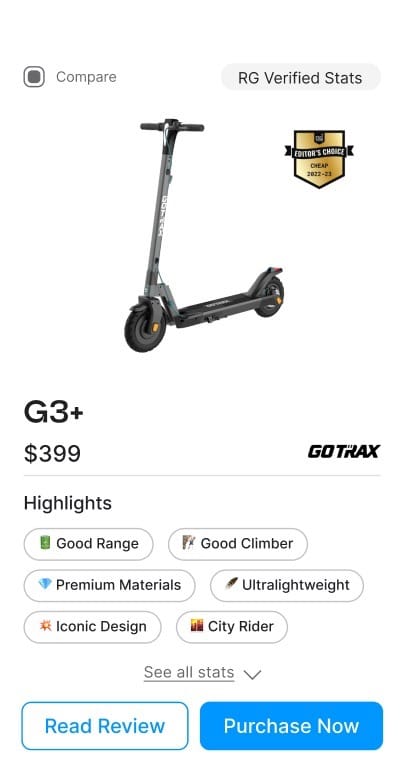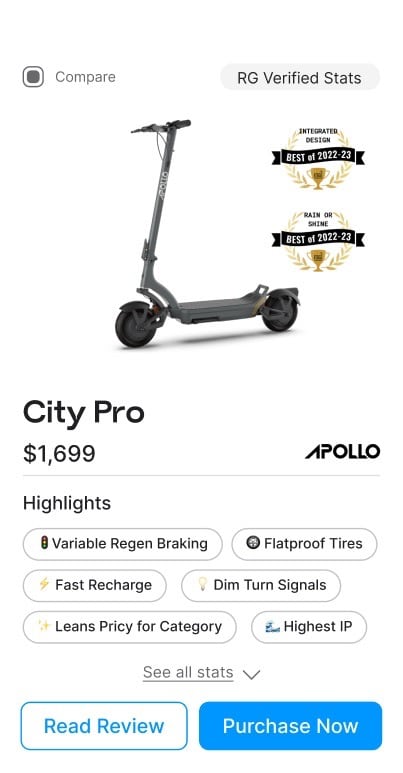
As the popularity of electric scooters increases, which are the best countries for electric scooter ownership?
The good new is that many countries that previously prohibited riders to scoot on public roads are now relaxing the laws.
So, where does your country stand on electric scooters?
In this post, we’ll explore why electric scooters are so popular and reveal the best countries for e-scooter ownership.
Let’s dive in.
The changing electric vehicle market & how e-scooters fit in

The term electric vehicle isn’t all that new, in fact it first made its debut in 1890. However, the low price of crude oil in the early 1900s meant manufacturers ditched the development of electric vehicles in favor of manufacturing gas-powered vehicles.
Today, we all know that gas engines are a significant source of pollution, and countries worldwide are uniting to reduce their carbon footprint and save the planet.
Meaning electric vehicles (EV) are finally getting the recognition they deserve.
The world market share for electric passenger cars is increasing each year, with China, European countries, and the USA seeing the most significant growth in electric vehicle registrations (Virta).
While electric vehicle adoption is on the up, with electric vehicle registrations for battery electric vehicles increasing year on year, it’s still important to remember that many people simply can’t afford to invest in large electric vehicles.
The cheapest EV in the USA, for example, is the Nissan Leaf, with a price tag of $27,400, meaning pure electric new passenger cars are still beyond the reach of many consumers.
Which is where micromobility transport comes in.
Why e-scooters are so popular

Countries worldwide are embracing electric vehicles as an environmentally friendly alternative to gasoline and diesel cars. These sustainable vehicles will be instrumental for each country to reduce its carbon footprint and become less dependent on fossil fuels.
While this sounds great, buying an electric vehicle requires a significant investment. The average e-car in the US costs $56,000, meaning most people won’t be able to afford one.
Electric micromobility vehicles are a cost-effective alternative to cars, with e-bikes and electric scooters offering more convenience, portability, and freedom than conventional vehicles.
While e-bikes are the ‘OG’ of personal electric vehicles, the newer electric scooters are fast becoming the more popular option for traveling (Science Direct).
The first shared scooter initiative
In fact, California launched the first shared scooter initiative in 2017, but in the past five years, cities worldwide have participated in one of the many scooter-sharing schemes from Bird, Voi, and Lime.
Micromobility vehicles such as e-bikes, e-skateboards, and electric scooters are proving a popular alternative to cars quite simply because they’re easier to use, environmentally friendly, and far more affordable than their four-wheeled counterparts.
While an electric car will cost (as a minimum) $27,000, personal light electric vehicles are a fraction of the price:
- Average electric bike: $1500 – $3500 for folding models
- Average electric scooter: $600 – $1500 for standard commuter scooters
- Average electric skateboard: $400 – $2000
It’s worth nothing that while an electric skateboard has the lowest price tag, they’re not suitable for all riders – they’re for experienced skateboarders. Using a non-motorized skateboard takes a lot of practice and balance, but electric skateboards are faster, more powerful, and definitely not beginner-friendly.
Which is why most commuters or general travelers will opt for an electric bike or electric scooter instead. Both are user-friendly and easy for beginners to use, however the sheer portability of the e-scooter makes it a far more popular option than the larger and heavier electric bike.
But that’s not all.
The benefits of e-scooters
E-scooters offer so many benefits over cars and e-bikes, including:
- They’re easy to store and transport: The sleek frame is perfect for your office or apartment, but e-bikes take up more space.
- Better security: There’s no need to leave a scooter outside, so there’s less theft risk.
- Affordability: Standard commuter scooters are more affordable than cars and most e-bikes.
- Accessibility: Scooters are sleek enough to maneuver through traffic, but e-bikes aren’t as compact.
- Ease of use: You don’t need to pedal an e-scooter, making them perfect for a sweat-free commute.
The best countries for electric scooter ownership

Because of this multitude of benefits, it’s easy to understand why e-scooters are growing in popularity. So let’s take a look at which countries are giving them the props they deserve.
If you’re looking for a more affordable way to travel while positively contributing to the environment, these countries have your back.
| Country | Are private e-scooters legal? |
Public roads | Cycle paths | Sidewalk | Age restriction |
| Belgium | Yes | Yes | Yes | No | 16 |
| France | Yes | Yes | Yes | No | 8 |
| Germany | Yes | Yes | Yes | No | 14 |
| Austria | Yes | Yes | Yes | No | 12 |
| Singapore | Yes | No | Yes | No | 16 |
| USA | Yes | Most states | Yes | No | 12-17 |
Belgium

Belgium has always taken a liberal approach to regulating private e-scooters, and up until March 2022, the laws were relatively relaxed, for example, riders were allowed to use their scooters on sidewalks.
However, the country decided to regulate electric scooters to promote the safety of both riders and pedestrians.
For example, after statistics revealed that one in seven e-scooter accidents involved a person under the age of 16, officials decided to change the age limit, among other new regulations.
Now, a person must be 16 years and over to ride both rental and private scooters in public places and on roads. However, children can still use them on their private land.
Belgium also now prohibits riding on the sidewalk and requires people to use designated scooter parking spots. The introduction of parking spots reduces the obstructions rental scooters can cause when people leave them in the middle of the street.
Authorities are also able to issue an immediate fine of €58 if people breach any of the new regulations.
Overall scooter friendly ranking
While some might feel Belgium’s stricter rules make it a less scooter-friendly country, these new regulations will help ensure the continuation of e-scooters in public places.
By protecting pedestrians and ensuring people take more responsibility for rental scooters, more people are likely to accept them as part of everyday travel.
France

France is another country that recognizes the benefit of electric scooters while refusing to compromise on safety, for example, it’s legal to ride scooters on public roads and pedestrian areas as long as riders adhere to the speed limits.
In France, the maximum speed for scooters is 20km/h in the majority of areas and 8km/h in high pedestrian areas. Authorities will issue penalties to riders going above the maximum speed limit of 25km/h.
Other penalties for misusing an e-scooter in France include:
- Using an e-scooter on a sidewalk: €135
- Disrespecting traffic rules: €35
- Exceeding the 25km/h limit: €1500
As with many other European countries, France struggles with rental scooters. In that some people fail to take responsibility for their rental scooters and will often leave them in the road or on sidewalk, causing obstructions.
There have also been reports of people throwing scooters in the River Seine in frustration, where operators then have to spend hours trying to retrieve them (Reuters).
Surprisingly, the age limit for riding e-scooters is just eight years old, however the law states that children under 12 must wear a helmet.
Overall scooter friendly ranking
France has a clear set of rules for both shared and private e-scooters, but it’s clear that scooter sharing causes a lot of problems. Despite having designated parking spots, cities like Paris are still struggling to enforce how people use their scooters.
With Paris alone having circa 40,000 e-scooters, it could be beneficial to reduce the number of electric scooter rental schemes to encourage more people to purchase their own scooters. Private e-scooters could result in more responsibility and compliance, but overall, France is still one of the best countries for e-scooter users.
Germany

Germany was one of the first countries to embrace electric scooters, and while the nation is open to them, there are also a lot of rules around their use.
People can use their private scooters on public roads and cycle paths, but not in designated pedestrian areas. Each model must have a maximum speed of 20km/h, and higher speed scooters are confined to private land only.
In Germany, e-scooters fall under the miniature electric vehicle classification, and privately owned models must meet pre-set standards to be ‘road-worthy.’
The ABE (Allgemeines Betriebserlaubnis) is a certificate that confirms a scooter is fit for road use in Germany. To get a certification, manufacturers must ensure their scooters have:
- Front and rear independent brakes
- A maximum speed capacity of 20km/h
- The scooter model ID, manufacturer, and ABE number displayed on a tag
- Steering or holding bars
- A horn, bell, or other clear warning signals
- An insurance sticker
- Lights on the front and rear of the scooter
- Max motor power of 1500 Watts
If a scooter doesn’t have an ABE number, it won’t be eligible for insurance, and riders won’t be able to use it on streets, cycle paths, or public roads.
Anyone that breaks the rules could be fined up to €2000 as scooters fall under the STVo (German traffic laws).
Overall scooter friendly ranking
Germany has taken extra measures to ensure private e-scooters are safe for all road users.
With strict lighting, warning signals, and brake regulations for each model, Germany takes an open-minded but practical approach to embracing e-scooters safely.
It’s a tough, but fair, place to scoot.
Austria

Austria recognizes the difference between electric scooters and alternative motor-driven vehicles like e-bikes and mopeds. Meaning riders can use their e-scooter without a license or insurance, but riders must adhere to the e-scooter regulations.
While e-scooters are recognized as electric vehicles, the government still uses bicycle and motorbike laws to regulate scooter use and ensure riders understand their legal obligations.
For example, an e-scooter must have a maximum speed of 25km\h and 600 Watts, as well as working front and rear lights, to be allowed on public roads.
Overall scooter friendly ranking
While some countries are pretty vague about their e-scooter laws, Austria makes it easy for users to understand what they can and can’t do. This way all users can remain compliant and keep other road users safe.
It’s also a good country for families to enjoy scooting together, as the minimum age is just 12 years old (as long as someone 16 and over supervises the child).
Singapore

Singapore was one of the first countries to introduce electric scooters, and strict guidelines set by the LTA (Land Transport Authority) ensure the proper use of the scooters. Users can only ride electric scooters that are LTA-approved.
Each model must:
- Have a maximum speed capacity of 25km/h
- Weight 20kg or less
- Have a width that doesn’t exceed 70cm
The law covers all scooters, including modified models, and states that manufacturers and users must verify that their scooter is safe. Failure to comply with the rules can result in a maximum fine of $10,000 and a jail term of up to six months, with repeat offenders facing much harsher punishments.
Recent changes to the law prohibit people under 16 from using e-scooters without the supervision of an adult aged 21 and over. Further to these laws, people under 16 – or adults who plan to supervise a minor – will have to take a theory test to prove their knowledge of the road safety laws.
Singapore also prohibits people from using their scooters on pedestrian paths and public roads unless there’s an obstruction and the road is safer than using the designated shared paths. People that don’t comply with the rules will face a fine of $2000 and could face jail time.
Overall scooter friendly ranking
While the laws in Singapore seem excessive, here’s the thing; there are 460km of cycling paths, and there are plans to extend that to 800km by 2023 (LTA). That’s a whole lot of scooter friendly tracks right there.
Singapore is one of the most progressive cities and global leaders in the eco-friendly revolution, so it makes sense that they’ve got the e-scooter laws right. With plenty of shared (cycle) paths to choose between and transparent regulations, e-scooter riders can enjoy a stress-free way to travel.
The USA

Last but not least is the USA. Naturally, many people have welcomed e-scooters as an eco-friendly alternative to gas-guzzling cars and a more affordable way to commute. But what about the government?
When it comes to e-scooter laws in the USA, there’s no black or white, but a ton of grey. As each state sets its own regulations, people are often left to question if their private e-scooter is legal or not.
While the below gives you a breakdown of scooter laws in the USA, it’s best to check your state’s specific scooter regulations, just to be on the safe side.
Where are scooters legal?
Both Delaware and Pennsylvania prohibit e-scooters on public roads and streets, but all other states have legalized e-scooters to varying degrees.
For example:
Using e-scooters on sidewalks
Most states prohibit people from using scooters on sidewalks, but some have no regulations in place, including in:
- New York
- North Dakota
- Montana
- Tennessee
- Kansas
- Connecticut
- Nebraska
- Oklahoma
Speed limits
Again, each state sets its speed limits, but the typical maximum speed is 20mph. Of course, others may have stricter rules, so it’s always best to check.
Overall scooter friendly ranking
Apart from Pennsylvania and Delaware, most states recognize the advantages of electric scooters and base age, speed, and license requirements on the current legislation.
While the federal level laws are ambiguous, many e-scooter users in the US would agree they have the freedom to enjoy an environmentally friendly way to travel and commute.
As the USA has joined the effort to ensure gas cars will no longer be available for purchase by 2035 (Reuters), electric vehicles will continue to grow in popularity.
However, e-scooters offer people an alternative to the financial burden of car ownership as well as being more accessible in terms of cost and availability. With most states freely accepting e-scooters, it’s clear that the USA is well on its way to being one of the more open-minded countries.
Countries that are yet to embrace electric scooters fully

Most countries are introducing e-scooter regulations, but some are falling behind, and it’s unclear what the future holds for them.
For example, Ireland was set to legislate scooters in 2021 but put the date back to 2023 as the government is waiting for ‘legal clarity.’
As other countries begin to test ride-sharing schemes, it’s likely that many will eventually offer clearer guidance to e-scooter users. Still, smaller countries, such as Kazakhstan and Montenegro, are yet to legalize or ban the use of e-scooters.
The future, however, seems bright for most countries, with one exception; Australia.
Australia
Unfortunately, the Australian government isn’t feeling the love for electric scooters, and most are yet to welcome them onto the road. Despite their many benefits, including reduced carbon emissions, only two states have legalized e-scooters.
Queensland and the Australian Capital Territory allow the use of electric scooters, but there are strict regulations in place, including:
- Minimum age of 12 (with adult supervision)
- Single person riding only (no passengers)
- Have a max speed of 25km/h by design
- Using cycle paths wherever possible
- Helmets for anyone using a scooter
- Visible lights and brakes on all scooters
Why don’t the other states allow e-scooters?
It’s unclear why the other states in Australia refuse to legalize e-scooters, but safety concerns seem to be the driving factor behind the ban. New South Wales states that electric vehicles are only for use on private land, while Victoria issues an $826 fine for users of illegal devices (including scooters).
Western Australia regulates scooters and states that people can use their scooter on a public street, as long as the motor is 200Watts and the scooter has a max speed of 10km/h – which isn’t going to get commuters very far!
The laws aren’t changing anytime soon, but petitions have been submitted asking the country’s leadership to allow e-scooters.
Here’s hoping it will work!
The future of electric vehicles including e-scooters

Electric cars will only continue to grow in popularity, and the price will likely decrease over time to ensure American and European countries can support people as they go gas-free.
For the time being though, we believe electric scooters are the best way to travel around without having to invest thousands in an expensive electric vehicles
And the good news is the USA is one of the most liberal countries for PEVs, so if you haven’t discovered the pure joy of owning an electric scooter, maybe it’s time.







